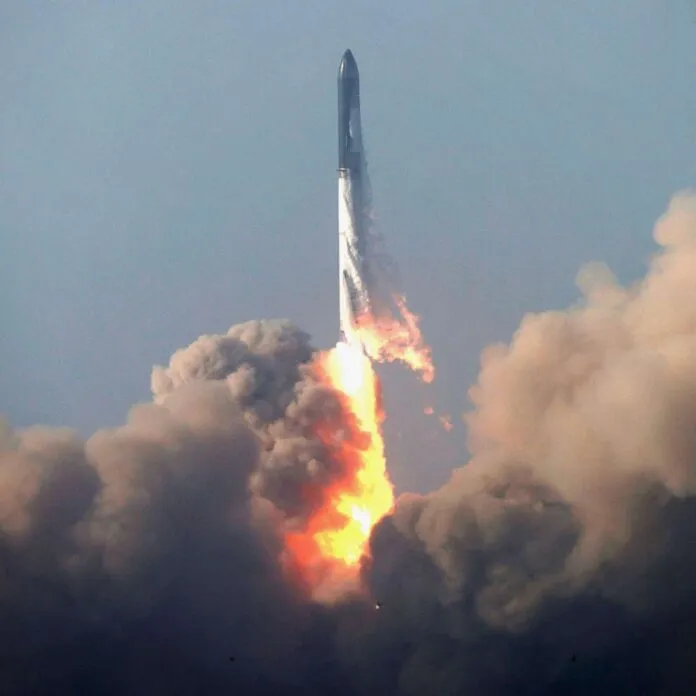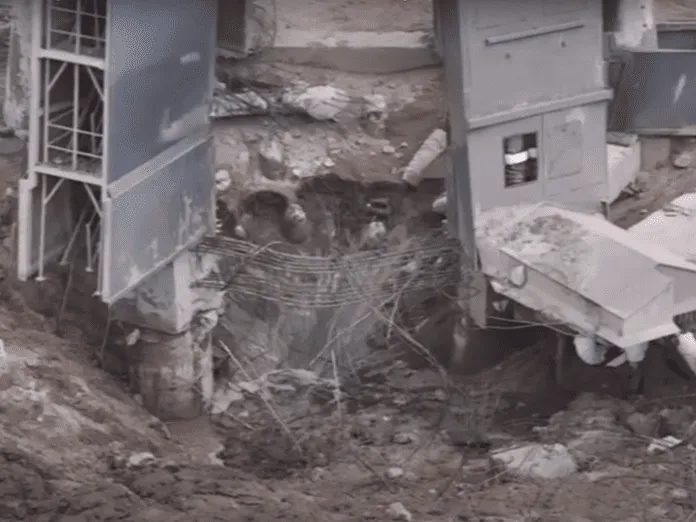Starship Grounded Until Launch Destruction Probed
The FAA has grounded SpaceX’s Starship program while it investigates last week’s explosive test launch of the full system. This time, however, the agency appears to be at least as interested in the scorched mess left behind by the booster as it is the explosion that was triggered a few minutes later when the second stage failed to separate from the main booster. The agency told CNBC that SpaceX won’t be allowed to try again until it’s satisfied “any system, process, or procedure related to the mishap does not affect public safety.”
The FAA and other departments are now trying to figure out if Thursday’s attempt harmed people, animals and the environment in general. The main concern is whether the massive dust plume that erupted when the 33 rockets on the booster blew the launch pad to pieces contained toxic particles that settled over a wide area. Any “anomaly” with the launch wasn’t supposed spread debris more than a mile from the pad but residents of Port Isabel and South Padre Island, about six miles away, reported their property coated in dust and ash.
After the launch attempt, SpaceX CEO took to his Twitter site to explain that they hadn’t quite finished the launch pad. “3 months ago, we started building a massive water-cooled, steel plate to go under the launch mount. Wasn’t ready in time & we wrongly thought, based on static fire data, that Fondag would make it through 1 launch,” he tweeted. Looks like we can be ready to launch again in 1 to 2 months.”
At Least It Didn’t Blow Up On The Pad
 If you could somehow tune your eyes to see the electromagnetic spectrum while watching yesterday’s spectacular launch of SpaceX’s Super Heavy/Starship, you’d see fat ropes of 0’s and 1’s streaming back to earth. And therein lies the explanation of why the thing blew up four minutes into the flight and the solution to fixing it so there won’t be a repeat. Or at least one that blows up at a different point.
If you could somehow tune your eyes to see the electromagnetic spectrum while watching yesterday’s spectacular launch of SpaceX’s Super Heavy/Starship, you’d see fat ropes of 0’s and 1’s streaming back to earth. And therein lies the explanation of why the thing blew up four minutes into the flight and the solution to fixing it so there won’t be a repeat. Or at least one that blows up at a different point.The launch was deemed a success by SpaceX and if so, it wasn’t an unqualified one. Elon Musk lead turned the outcome earlier in the week. “I’d like to set expectations low,” he said. “If we get far enough away from the launchpad before something goes wrong, I think I would consider that a success. Just don’t blow up the launchpad.”
Musk has had a pattern of sorts in saying his rockets are likely to blow up. I’ve always wondered if this is honestly reflective of a culture that moves at the speed of heat with high risk tolerance and minimal testing or just spin against the inevitable failures. It’s probably a little of each. Whatever it is, the SpaceX culture has produced reliable boosters and spacecraft that, if they haven’t revolutionized access to space, have certainly shaken up the status quo. No other company, country or even NASA is close to that kind of achievement recently.
Last November, we watched NASA finally launch its long delayed Space Launch System booster with an unmanned Artemis topping the stack. Its contrast with the Starship system couldn’t be starker. The SLS emerged from NASA’s typical plodding, circumspect and sometimes risk-averse development ethos. It was supposed to fly in 2016, but launched six years after that. SpaceX has famously fictional launch predictions so it goes with the territory, I guess. On the other hand, composed as it was from repurposed Space Shuttle parts, the SLS launched flawlessly and yielded a highly successful if not visionary mission.
I was watching Miles O’Brien on PBS last night who seemed a little puzzled at why all those SpaceX people were cheering and cheered even louder the booster went awry and blew up. I had the same reaction. If you’ve poured blood and sweat into a project this momentous, wouldn’t you be on fingernail-chewing pins and needles watching it fly? I would. But then I figured it out. At least I think I did. They were just thrilled to have gotten the thing to the point where it could sit on the pad awaiting ignition. As the SpaceX narrator said, anything past clearing the tower is icing on the cake. To those of us steeped in 1960’s space development, that’s like saying, well, at least Neil got it on the Moon before he hit a boulder and dumped the thing over, stranding two astronauts for eternity. We were primed and expecting of success and would have been devastated by failure. All of us a certain age remember the pain of watching our early rockets blow up. Maybe the SpaceX people expected a pad explosion and would have been unperturbed by it; anything better than that was a thrill.
Now they have to figure out how to make 33 engines start, run and keep running until the Starship has sufficient altitude and velocity to reach orbit with its own engines. SpaceX today reported “multiple” engine failures, and photos of the exhaust end showed at least five weren’t burning. That’s 15 percent loss of thrust and caused the vehicle to go off trajectory and lose altitude. (The engines that were running, weren’t at full power.) Presumably, all that data will yield some answers on the how and why of engine failures. But no one should underestimate the difficulty in keeping that many engines burning in close proximity at once. Just the fuel plumbing alone is daunting, not to mention the shock waves and resonance playing hell with combustion stability.
As they raced the U.S. for the Moon, the Soviets tried the multiple engine approach in the N1 rocket, the counterpart to the American Saturn 5. The N1 had 30 engines and never flew successfully, with one explosion causing a crater later visible by satellite reconnaissance. The engines, it turned out, had multiple interactions that were never sorted out because the Soviets didn’t static fire the system in its flight configuration. SpaceX did static fire the Super Heavy, but only for 10 seconds. Maybe Thursday’s flight produced enough data to not require further static fires. Computer modeling can do wonders with even minimal data.
SpaceX may also need to think about a flame trench and deluge system to tamp down resonances, as NASA did with the Saturn launches. Musk said his biggest worry about a pad explosion was that it would obliterate SpaceX’s ground facilities along the beach at Boca Chica, Texas. News reports say the facility suffered significant damage. It’s also possible that debris from the crater the exhaust dug may be implicated in control or engine failures. While SpaceX is tidying up that mess, they’ve got more Super Heavys on the production line ready for another try.





Ingen kommentarer:
Legg inn en kommentar
Merk: Bare medlemmer av denne bloggen kan legge inn en kommentar.